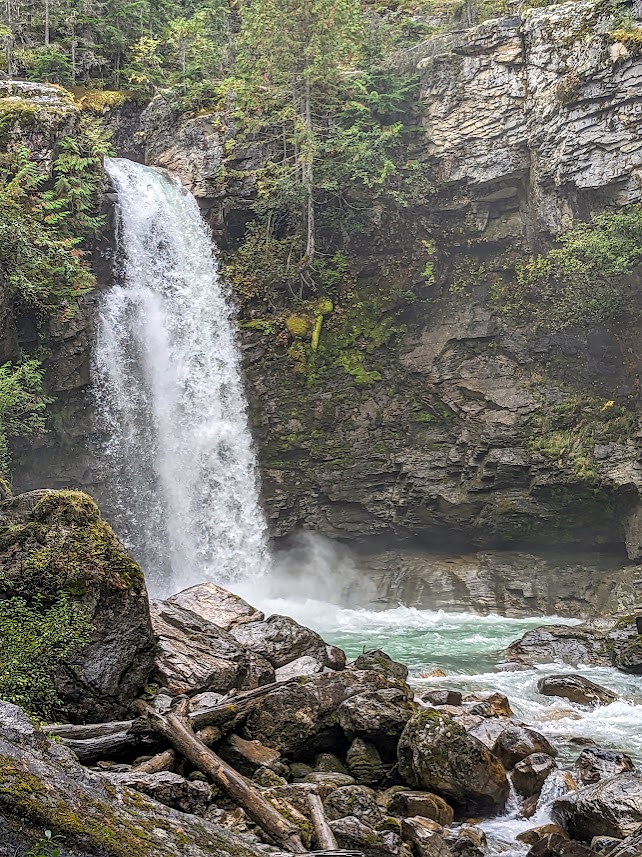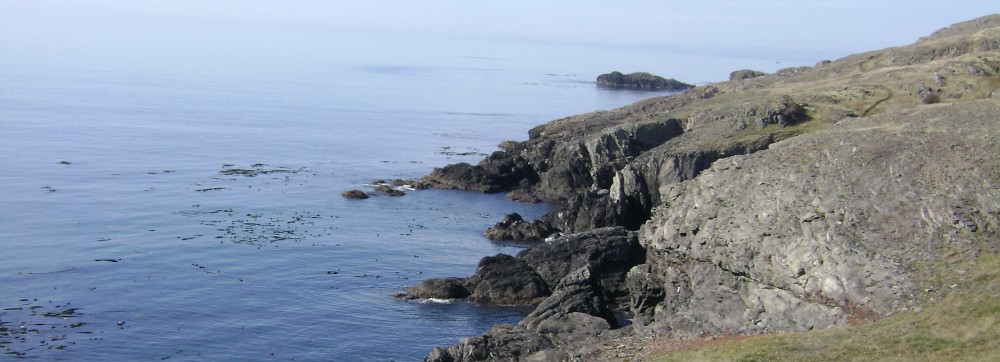The Mate and I have always had a huge crush on British Columbia. We’ve meandered up the Sunshine Coast, used Harrison Hot Springs as a base camp for checking out multiple provincial parks, thrilled ourselves with the Discovery Islands, and last September, spent two weeks exploring the lower half of Vancouver Island. And that’s not even counting the many times we’ve driven through on our way to the Rockies, murmuring, “Why aren’t we stopping here?“

This trip was all about stopping here. Not traveling too far in any direction. Going in circles, even. Exploring parks we’ve never heard of. All in the name of soaking up the wonders of a place that REALLY needs a better name.
Beautiful Coastline? Best Countryside?
We started in Manning Prov. Park, especially of interest to me because it’s the terminus of the Pacific Crest Trail, of which I’ve hiked many sections.

Since we were camped at Lightning Lakes, it seemed only fair to hike around them.

Bear Country? Bewitching Conifers?
The weather window started closing behind us at Manning, with snow predicted the next night, so we kept moving, down toward the flat(ter) Okanagan. We’d heard of the famous Kettle Valley rail trail, and in Princeton we did ride a section of it, but we also checked out trails in the community reserve of China Ridge, just above the town.

The trails were more mountain-bikey than we usually ride, but we enjoyed our short stint up there.

Biking Country? Best Camping?

Next night we camped by the Kettle River, right where the rail trail crosses. Having had two rides that day, we just strolled some of it; the river was the best part. Notice the burned area in the back left? That’s from a 2015 fire. We were hyper-aware, this whole trip, of the fires still burning near Kelowna, and made sure to avoid the area.
Burning Cruelly? (unfortunately that “BC” could apply many place)
Following lovely Rt. 3 (the Crowsnest Highway) to Castlegar, we once again met up with the Kettle Valley River Trail, and rode another section…along the Columbia River. Yes, THE Columbia River–what we Washingtonians, and probably some Oregonians too, tend to think of as OUR Columbia River.

Behold Columbia? (That one at least makes some sense!)
After that ride, we swung north on little Rt. 6 to the tiny town of Slocan. We’d chosen Slocan because of its proximity to Valhalla Prov. Park, whose photos looked more national-park level than provincial.

But we soon discovered how hard it is to get INTO Valhalla.

It’s really a backpackers’ park, and we hadn’t come to backpack.

Big Cop-out? Maybe. But luckily for us, Slocan boasts its own rail-trail, which follows the Slocan River as it flows out of Slocan Lake.

Slocan itself is a sweet, quirky little town with rainbow crosswalks and helpful volunteers in the library. We’d go back there in a minute, and maybe ride all the way down to some other simpatico towns on Rt. 6 with hippy-sounding cafes and bakeries.
Bakery Central? (I guess that applies to lots of places too) Biking Capital?
Even rockslides don’t stop these folks. You can hike right through this one.

Leaving Slocan, we decided to loop around a bit. The plan HAD been to camp 2 nights at Glacier National Park…but that weather window slammed shut, and we didn’t want to camp in snow. With an extra day before our hotel reservation in Revelstoke, we followed Rt. 6 back west in a squiggly semi-circle that took us back to–ta dah! The Columbia.
They don’t even call it a river there, they call it Arrow Lake! Seeing that mighty river so abused brought us no joy. OK, a little joy. It was still fun ferrying across.
Burdened Columbia?
But that afternoon cheered us right up. First we got to ride yet another rail trail (Okanagon) along Laka Kalamalka, an honest-to-gods, true-blue, undammed stretch of watery glory…

…and then, that evening, near the lake, the Mate and I got our first Glamping experience, on a hydroponic farm!

Doug, the friendly owner of Utopia Feels glamping, gave us the full tour, including veggies:

…critters:

…and of course, the glamping tents!

I can’t say we’ll ever do this again, but it was a hoot and a half to do once!

Bountiful Campgrounds? Bodacious Comfort?
Leaving the Okanagan behind, we turned north and east again, as if heading for the grand Rockies. But this time we stopped short, in the town of Revelstoke, home of…

…you guessed it: the Columbia River. Still dammed (just upstream from town), but looking closer to a real mountain river than I ever dreamed it could.
Beautiful Clarity!
Revelstoke nestles into a whole batch of mountains, including Mt. Revelstoke, which has its own national park. Clear skies were in short supply when we drove the single road in and up to hike toward the summit:

Over the next couple of days, as the rains moved in, we took advantage of little breaks to revel in local awe (Revel? in Revelstoke? See what I did there?).


Just up the road (literally, up) from Revelstoke is Canada’s Glacier National Park, and it KILLED me to be so close and not go. But we were disinclined to drive in possible snow & ice. So…next time, B.C.
Best Choice?
But Revelstoke was quirky enough for us. Examples: Woodenhead, apparently carved decades ago by some dude for the fun of it, and adopted by the town:

…and this Indian-German fusion restaurant we found.
After Revelstoke, stymied by weather to the east, we turned west. I’ll save that for Part II, because that part was
BEYOND COMPARE.



















































































